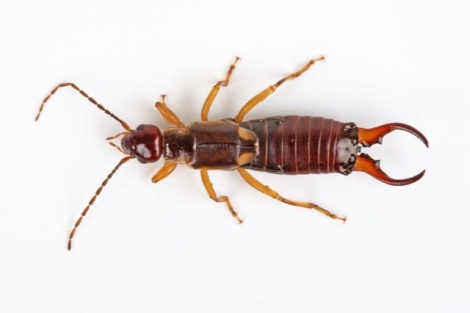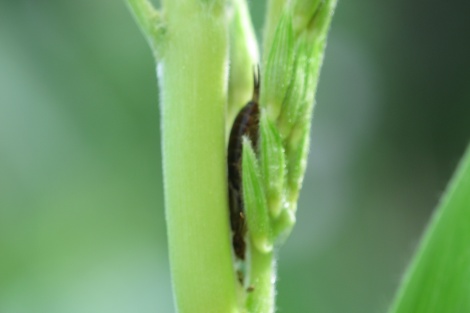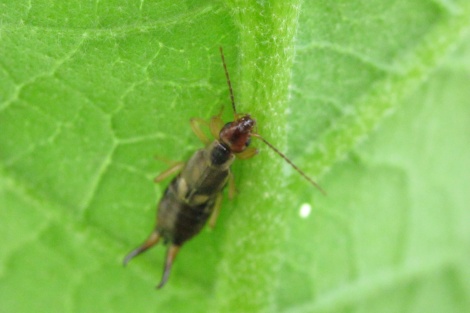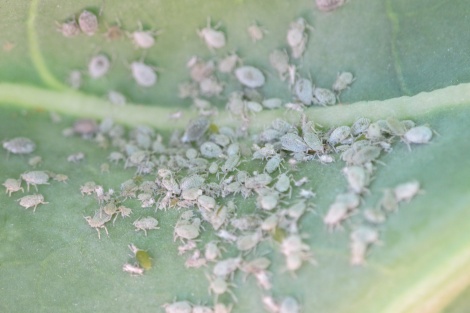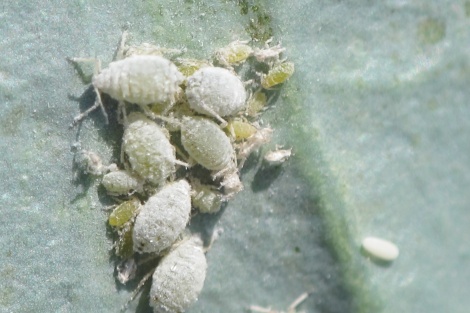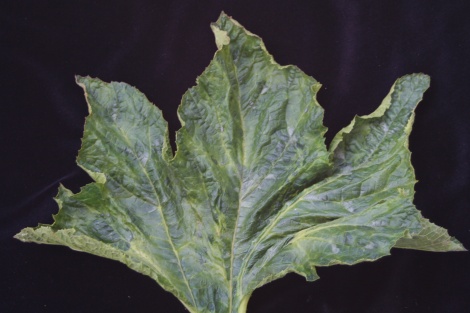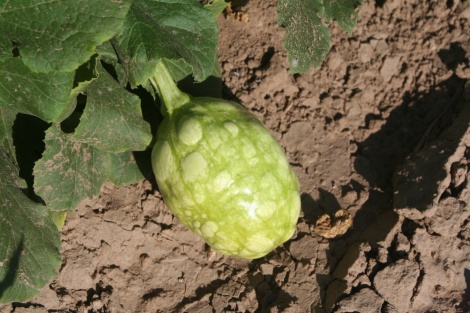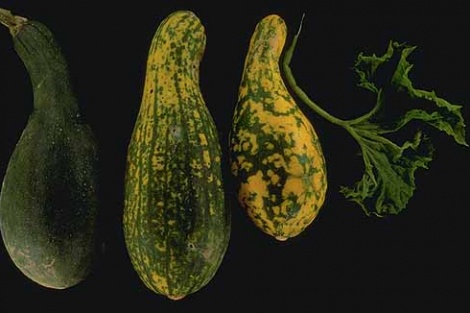In this Issue:
- Earwigs: Friend or Foe?
- Cabbage Aphids: Damaging your brassicas
- Watermelon Mosaic Virus: Watch your melons
Earwigs (Forficula auricularia)
Overview
The European earwig is a menacing invasive species that is both a pest to some host crops and beneficial insect to others. The adults are slender with a brown body, red-brown head, and have a prominent pair of “pinchers” on the rear of its body. The earwigs feed on beans, beets, cabbage, cauliflower, celery, chard, corn, cucurbits, leafy greens, potatoes, tomatoes, flowers, and consume pests such as aphids.
Damage
Both earwig nymphs and adults will crawl into tight, dark places during the day. They can feed on the buds, flowers, fruits, corn silks, and young vegetable seedlings that can cause direct plant damage.
Management
Populations are at their highest from mid to late summer. Monitor by placing boards, crumpled moist newspaper, or corrugated cardboard on the ground near host plants. Management is only really necessary when populations are causing unacceptable crop damage.
Additional Resources
Earwig attacking a Wooly Apple Aphid Colony (Video)
How to trap earwigs (Video)
European Earwig (USU Factsheet)
Cabbage Aphids (Brevicoryne brassicaell)
Overview
Adult cabbage aphids are usually 2-2.5 mm long and range from a green to grey color. They have a significant waxy covering and short cornicles. Cabbage aphids primarily feed on broccoli, Brussel sprouts, cabbage, and cauliflower.
Damage
When not controlled, Cabbage Aphids populations can become very dense. These masses can lead to honeydew and sooty mold on the plants. The host plant leaves will wrinkle, curly, and cup downward.
Management
– Manage nitrogen levels; avoid excess.
– Encourage natural enemies; avoid toxic chemicals, provide nectar and pollen resources.
– Keep crop area weed-free.
– For viruses transmitted by aphids: plant resistant cultivars, plant early, and removed infected plants.
– Click here to view commercial use insecticide options
– Click here to view home use insecticide options
Additional Resources
Cabbage Aphids (Utah Veg Production & Pest Management Guide)
Aphid Pests on Vegetables (USU Fact Sheet)
Cabbage Aphids (California IPM)
Watermelon Mosaic Virus
Overview
Watermelon Mosaic Virus is a Potyvirus transmitted by aphids. It can affect beans, cucumbers, gourds, peas, pumpkins, squashes, watermelons, and various weed species. The symptoms can include stunting, leaf malformation, yellowing mottling, marginal chlorosis, and fruit deformation. This disease can be widespread in Utah watermelon production along with cantaloupe.
Management
– Control Weeds
– Rotate crops
– Use resistant varieties when available
– Insecticides for aphids are of limited value to control this disease
Additional Resources
Watermelon Mosaic Virus (Utah Veg Production & Pest Management Guide)
Watermelon Mosaic Virus (California IPM)
Viruses of Cucurbits (Minnesota Extension)

